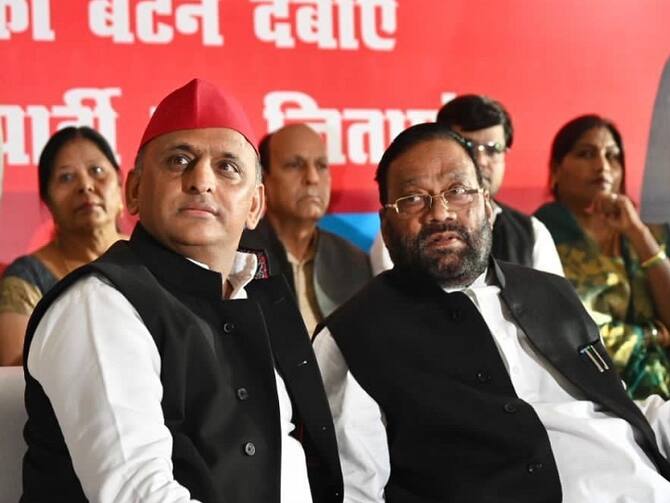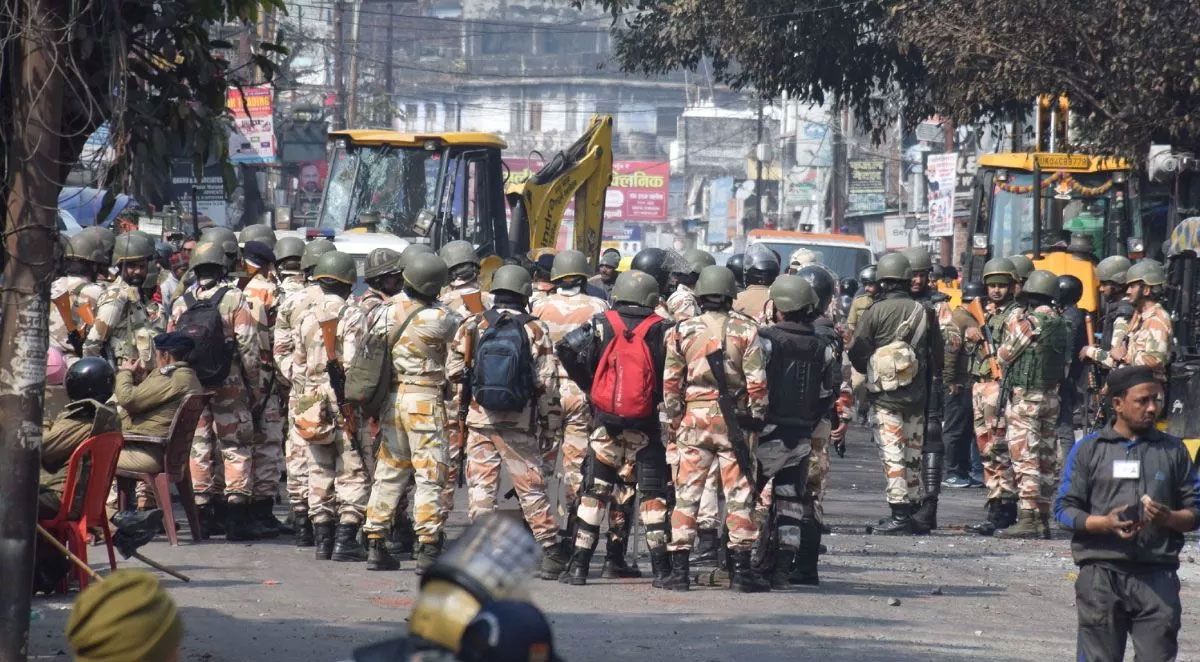The Uttar Pradesh government has drafted a Bill titled “Uttar Pradesh Population (Control, Stabilization and Welfare) Bill, 2021” and has put it in the public domain, inviting suggestions from civil society on the provisions in the proposed legislation. The Bill envisages a two-child norm for reining in the state’s population growth. This article is not about the provisions of the Bill but we do need to have some idea of what it proposes. It provides for some incentives for those adhering to the proposed norms and prescribes disincentives for those who fail to do so. Those with more than two children will be debarred from contesting local elections and will be deprived of the benefits of government welfare schemes.
The proposed legislation is being widely debated in the country. One section is highly appreciative. Chief Minister Yogi Adityanath believes that population control is a primary pre-requisite for a prosperous and developed society. Deputy Chief Minister Keshav Prasad Maurya says that bringing about all-round development of the state is the main objective of the proposed measure.
Those against the measure argue that a coercive population policy encroaches on the basic rights of the citizens, guaranteed under the Indian Constitution. Several other arguments have also been advanced against the Bill.
The questions that need to be answered are: Does any state in India need a coercive population policy? Which sections of society will be affected the most by such a policy? What can be its long-term effects? And are there any alternatives to such a policy?
Need for coercive population policy
Does India as a whole or any of its states need a coercive population policy? We have ample figures and facts to answer this question. But before that, we need to be aware that the Seventh Schedule of the Constitution lists population control as a concurrent subject, allowing both the Union and the states to legislate on it. At the central level, the first step towards population control was taken in the First Five-Year Plan (1951-1956). India was the first country in the world to adopt family planning as a national goal and the First Five-Year Plan sought to “reduce birth rate to the extent necessary to stabilize the population at a level consistent with requirement of national economy”. Subsequently, many states like Rajasthan (1992), Odisha (1993), Andhra Pradesh (1994), Uttarakhand (2002), Maharashtra (2003), Gujarat (2005), Bihar (2007) and Assam (2017) adopted a “two-child policy” – although the extent to which the policy is being implemented in these states is a separate matter. Now, Uttar Pradesh is seeking to join the league.

Coming back to the main point, according to the UN World Population Prospects 2019, with 1.37 billion people, India is the most populous country in the world after China. The report projects that by 2027, India’s population will overtake that of China. Do these figures show that India is in the middle of a population explosion? The answer is “no”. According to Census 2011, there has been a noticeable drop in the decadal population growth in India, which fell from 21.5 per cent (1991-2001) to 17.7 per cent (2001-2011). The total fertility rate (TFR – the number of live children born to a woman in her entire reproductive age) is also falling. According to the National Family Health Survey-4 (NFHS-4) 2015-16, the TFR was 2.2, down from 3.4 (NFHS-1 1992-93). According to NFHS-5 (2019-20), the TFR is 2.1 or less than 2.1 in 14 of the 17 states of India. This means that in these states, a woman, on an average, is giving birth to 2.1 or fewer children in her reproductive life.
Demography has a concept called Replacement Level Fertility (RLF). It is defined as “the level of fertility at which a population exactly replaces itself from one generation to the next”. This is akin to 100 trees being planted in a particular area to replace an equal number of trees that were felled. Thus, if in a country, the next generation replaces the last generation, it is said that the country has achieved “Replacement Level Fertility”. The value of RLF is 2.1. The population of such a country remains the same from generation to generation, provided there is no immigration.
According to the SRS (Sample Registration System) 2018, the TFR of India is 2.2, which is very close to the RLF. The TFR of Assam and Uttar Pradesh is 2.2 and 2.9, respectively. Thus, the TFR of Assam is very close to the RLF. In the case of Uttar Pradesh, the TFR is substantially higher than the RLF but it is falling. It fell from 3.1 in 2016 to 3.0 in 2017 to 2.9 in 2018. According to the 2020 report of the Technical Group on Population Projections, Ministry of Health and Family Welfare, Government of India, titled “Population Projections for India and States 2011-2026”, even without any coercive measures, Uttar Pradesh will achieve the Replacement Level Fertility by 2025. Thus, the population of Uttar Pradesh is also moving toward stabilization. It is clear that neither India as a whole nor states like Assam or Uttar Pradesh are facing a population explosion and therefore do not need a coercive population policy.
Why is the Uttar Pradesh Government so keen on implementing a coercive population policy when it is not a demographic imperative? The fact of the matter is that political and religious factors are behind this Bill. Uttar Pradesh is to go to the polls in 2022 and the Yogi Adityanath government has nothing to flaunt as its achievements. The law and order situation in the state is abysmal and the mismanagement and inaction that informed the government’s handling of the second wave of the Covid-19 pandemic is too well known to be repeated. The government is keen to find some way of polarizing the voters along communal lines to win the elections. The proposed Bill is a step in that direction.
Though the draft Bill does not refer to any specific community, it is widely believed to be prompted by the fears of the so-called sharp growth in the Muslim population of the state. The right-leaning groups have been peddling the fear that the population of Muslims is growing at a very fast rate; that the Muslims will soon outnumber Hindus and that will translate into a threat to the Hindus and their culture. Let us see whether figures substantiate this propaganda. According to NFHS-1, in 1992-93, the TFR of Muslims and Hindus was 4.4 and 3.3, respectively. That means, a Muslim woman, on an average, was giving birth to 1.1 more children that a Hindu woman in that year. The NFHS-4 (2015-16) put the TFR of Hindus and Muslims at 2.1 and 2.6, respectively. The differential of 0.5 meant that on an average a Muslim woman was giving birth to 0.5 more children than a Hindu woman.
An analysis of the data of 1991, 2001 and 2011 censuses throws up interesting results. In the period 1991-2001, the annual growth rate of Hindu and Muslim populations was 1.8 per cent and 2.6 per cent respectively, which fell to 1.55 per cent and 2.2 per cent in the period 2001-2011. According to an estimate (Livemint.com, May 2018), if this decline in growth rates persists (both continue to grow at slower rates), both Hindu and Muslim populations will hit a peak in 2061. Then, Muslims will number 29.24 crore and Hindus 140.25 crore. India’s overall population at the time would be 173.03 crore, with the Muslim proportion at 16.89 per cent. Hindus would actually account for 81.06 per cent at the time. Thus, even when the Muslim population is at its peak, four of every five Indians will be Hindus. According to projections made by distinguished demographist P.N. Mari Bhat, Muslims will achieve replacement fertility by 2031 and population stabilization by 2101, and will account for 18.8 per cent of India’s population then. Thus there is no scientific basis to assume that Muslims will outnumber Hindus in India in the years or decades to come. Such assumptions are fallacious and baseless.
Whom will coercive population policy affect?
Many social-science researches have confirmed that the Dalits, Adivasis and OBCs tend to be poorer and less educated than other social groups. The Sachar Committee (headed by Justice Rajinder Singh Sachar), in its report submitted to then prime minister Manmohan Singh on 17 November 2006, said that Muslims lagged behind even the Dalits and Adivasis on socio-economic-educational parameters. Thus, Dalits, Adivasis, OBCs and Muslims (a vast majority of whom are Pasmanda Muslims, meaning Dalit and OBC converts) are the socio-economic-educational backward communities of India. According to a study by Jungho Kim (2016), there is an inverse relationship between a woman’s educational status and her fertility.
Generally speaking, educated women give birth to fewer children than the uneducated ones. Educated women are more aware of the importance of the size of family. Given they have little or no education, Dalits, Adivasis and Muslims know little or nothing about the various dimensions of family planning. The women who have never been to school or have dropped out are married early, have a longer productive life and give birth to relatively high numbers of children. According to NFHS-4 (2015-16), the TFRs of SCs, STs, OBCs and upper castes were 2.48, 2.26, 2.22 and 1.96, respectively. In such a situation, a coercive population policy (two-child norm) is bound to affect SCs, STs and OBCs more than the upper castes. They would be deprived of the right to contest local elections and the benefits of government welfare schemes. Those in government service wouldn’t be considered for promotions. To sum up, they would become victims of economic and political exclusion. The draft bill, if it is made into a law, will adversely affect the Dalits, Adivasis, OBCs and Muslims.
Long-term results of coercive population policy
A coercive population policy (two-child norm) may fetch good results in the short term, but its long-term results will be disastrous. To begin with, it will deprive women of their rights. In a democratic set-up like India’s, an adult woman should have the right to decide how many children she wants to give birth to. No government or organization can usurp this right. If the government feels that the population growth is injurious to national interest, it should try to improve the educational status of women and ensure better access to and awareness of birth-control methods. Secondly, the men who have political aspirations, those contesting elections for a political position, could abandon their wives. This would break up families and push up divorce rates, depriving women and children of the protective umbrella of a family. A 2005 study by Nirmala Buch, a former senior bureaucrat, delineates the pitfalls of such a policy. On the basis of a study covering five states having a two-child norm, she concluded that it led to a rise in gender-selective abortions and that men increasingly divorced their wives to contest elections.
Then, there are demographic implications. According to the Census 2021, 59.4 per cent of India’s population is in the productive age group (15-59 years) and senior citizens constitute around 8 per cent. Thus, India has the youngest population in the entire world. A coercive population policy will lead to a drop in productive population and an increase in the number of senior citizens – that is, people dependent on others. Thus, India will be deprived of its demographic advantage. Then, it will lead to an imbalance in sex ratio. Many studies have confirmed that there is a preference for the male child in South Asia in general and in India in particular. According to a study by Monica Das Gupta, Jiang Zhenghua, Li Bohua, Xie Zhenming, Woojin Chung and Bae Hwa-Ok (2003), parents in India prefer male children to female children due to the dowry system, parents in China do so due to strict laws governing fertility rates and in South Korea due to a patriarchal society.
In India, the desire for a male child is common but it is not uniform across all communities (Mitra, 2018). Due to their access to information and economic resources, the educated and prosperous classes use gender-selective abortions to achieve the twin objectives of a small family with a son. Those with lower educational-economic levels are unable to do that and so have a higher fertility rate. Haryana serves as an example of the former phenomenon. It is counted among the more prosperous states in the country but has the lowest child (0-6 years) sex ratio of 830. Bihar is a poor state with low educational levels and therefore has the highest fertility rate. In India, a family is not considered complete without a son. In the quest for a son, couples continue having more and more children. This will become difficult once a two-child norm is adopted and that will lead to an exponential jump in gender-selective abortions. Female foeticide rate will go up, leading to a lower child sex ratio, which, in turn, will affect the adult sex ratio. According to We Huang (2017), the one-child norm is responsible for the low sex ratio at birth in China. There can be no two opinions that the adoption of a two-child norm will further skew the sex ratio at birth and of children and ultimately, the adult sex ratio. A long-term effect of this norm is that men will be unable to find girls to marry, which may lead to an increase in rapes. Skewed sex ratio will lower India’s standing in the comity of nations and will make attainment of its development objectives difficult.
The alternatives
Barring China, a coercive population policy has not played a significant role in controlling the population, including in states in India. Even in the case of China, not all scholars agree that it was the one-child norm that led to a fall in the fertility rate. A study by Whyte, Wang and Yong (2015) attributes the drop in fertility rate in China to the fast-paced economic development of the 1990s and not to the coercive population policy foisted on the people. Another study by Junsen Jhang (2017) says that while the coercive population policy might have been a factor, other factors played a greater role in bringing down the fertility rate.
Indian states like Kerala and Tamil Nadu were able to bring down the fertility rate by investing in health and education. Countries with less resources than India like Sri Lanka (by increasing the minimum age for marriage) and Bangladesh and Indonesia (by making huge investments to ensure availability of means of birth control) were able to bring down fertility rates without taking recourse to coercion. India can do the same but it will require willpower on the part of the policymakers. Honest initiatives are needed, one of them being promoting higher education among women. Social scientists say that education is the “magic bullet”, with multidimensional positive outcomes. Women acquiring a higher education tend to marry late, which reduces their post-marriage productive age and thus brings down fertility rate. Also, highly educated women are more aware of the means and benefits of family planning and thus increase spacing between two children and reduce the number of pregnancies.
The second way is to weaken the patriarchal social setup. In India, an average woman lacks the agency to decide how many children she wants to have. Their in-laws have a major say in the matter. Education will empower women and help them break free from patriarchal norms. The third way is to make means of birth control available to married couples. A considerable investment is needed in this direction. A wide range of birth control options should be available so that the couples can choose from them in accordance with their needs and convenience. If these steps are taken, India won’t need a coercive population policy (two-child norm).
Mampatta, Sachin. (2018). Four out of five Indians will still be Hindu even when Muslim population peaks, Livemint.com
Kim, J. (2016). Female education and its impact on fertility. IZA World of Labor
Buch, Nirmala. (2005). Law of two-child norm in Panchayats. Economic & Political Weekly, Vol 40, Issue 24
Das Gupta, Monica, Jiang Zhenghua, Li Bohua, Xie Zhenming, Woojin Chung and Bae Hwa-Ok (2003). Why is son preference so persistent in East and South Asia? A cross-country study of China, India and the Republic of Korea. The Journal of Development Studies, Vol 40, Issue 2
Huang, W. (2017). How does the one child policy impact social and economic outcomes?. IZA World of Labor
Whyte, Henry, Feng Wang, Yong Cai. (2015). Challenging Myths about China’s One-Child Policy, The China Journal, No 74
Zhang, Junsen. (2017). The Evolution of China’s One-Child Policy and Its Effects on Family Outcomes. Journal of Economic Perspectives, Vol 31, Issue 1
(Translation: Amrish Herdenia; copy-editing: Anil)
Forward Press also publishes books on Bahujan issues. Forward Press Books sheds light on the widespread problems as well as the finer aspects of Bahujan (Dalit, OBC, Adivasi, Nomadic, Pasmanda) society, culture, literature and politics. Contact us for a list of FP Books’ titles and to order. Mobile: +917827427311, Email: info@forwardmagazine.in)
The titles from Forward Press Books are also available on Kindle and these e-books cost less than their print versions. Browse and buy:
The Case for Bahujan Literature
Dalit Panthers: An Authoritative History







